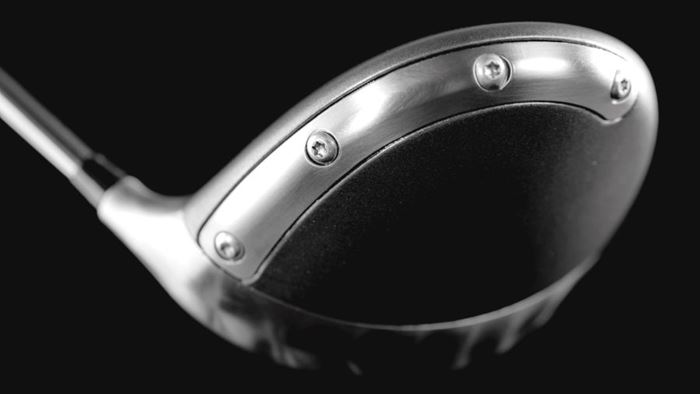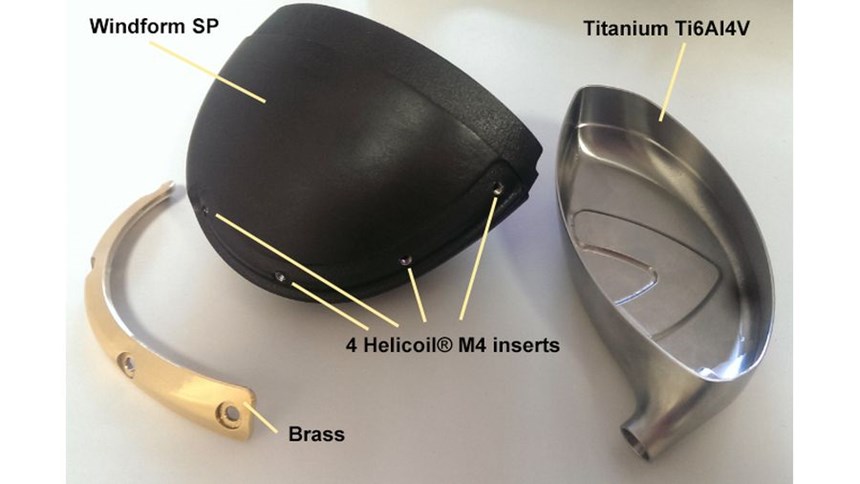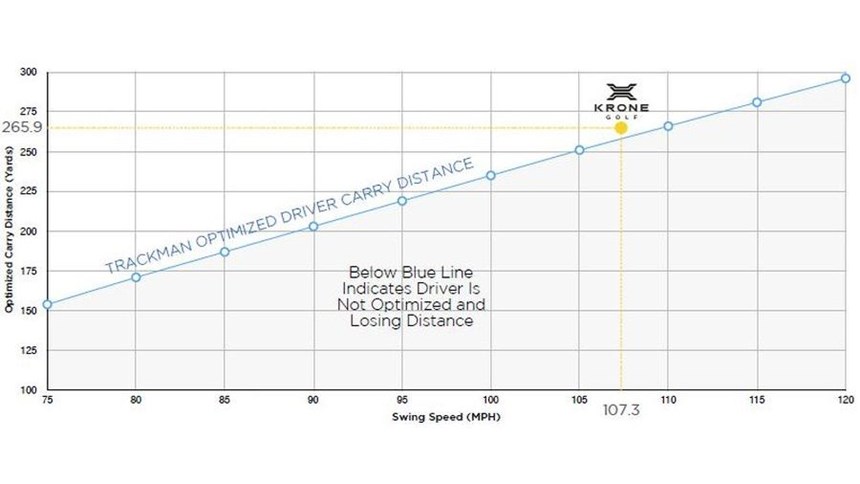Additive Manufacturing and CNC Machining Enable Driver Clubhead with Increased Performance
A combination of laser sintering, advanced materials and CNC machining enabled the creation of the KD-1 high-performance golf driver clubhead.
The engineering of new golf clubheads takes place within a restrictive box. The USGA and R&A (Rules Committee for Professional Golf) have placed limitations on the maximum size and volume that a golf driver can be, meaning that major golf club manufacturers tend to produce products that are very similar to one another. Engineering a high-performance golf driver within these parameters means that new designs typically focus on reducing cost and increasing output through well-established strategies—optimizing the thickness of each surface, controlling the total weight and tuning the center of gravity of the assembly.
In addition to the constraints placed on club design by golf’s governing bodies, the technologies traditionally used to produce clubheads are also restrictive. Relying on tooling for casting and forging is labor-intensive and expensive, limiting the geometry that can be produced and tending to preclude small runs or customized parts. In addition, casting and forging have wide tolerances plus part-to-part variations, requiring secondary operations.
To address these limitations, Krone Golf recently worked with CRP Meccanica and CRP Technology (both part of the Italy-based CRP Group) to develop a driver club head that would 1) help break out of traditional "mass produced" manufacturing techniques and lay the groundwork for mass customization and 2) offer improved quality and performance. To achieve these goals, the companies combined additive manufacturing with CNC machining of advanced materials.
Krone and the two CRP companies created a new composite driver clubhead made from multiple materials, each chosen for a specific function. By combining processes, the team created a production solution that would enable small runs and customization via additive manufacturing while solving problems of speed and accuracy through the integration of machining. The clubhead, known as the KD-1, complies with the necessary weight and size constraints while also offering improved performance for the user.
The KD-1 clubhead consists of a body, a face (the striking surface), a hosel (the socket into which the club's shaft fits) and a weight. The body is additively manufactured via laser sintering from Windform SP, a carbon-filled additive manufacturing material. It is highly ductile with good mechanical resistance, and can tolerate high stress fatigue including vibration and shock without the risk of breaking because its elasticity helps to absorb these stresses. The additive manufacturing department at CRP Technology performed the SLS process. The clubhead body also includes four Helicoil M4 inserts used to fasten the weight.
Both the face and the hosel of the club are CNC machined from solid titanium. Thus, each component, whether 3D printed or machined, is formed in a single operation. The alloy used for the machined parts, Ti6Al4V, is lightweight but durable. Following machining, the face is sand-blasted to clean its external surfaces. Finally, the weight of the clubhead is CNC machined in brass from solid, and sand-blasted as well. CRP Meccanica performed the machining and sand-blasting of these parts.
The three companies saw several advantages in this combination of CNC and additive processes. Both operations are lean and direct; once the CAD file is verified, and programming and setup are complete, the part can be made directly using CNC or SLS equipment that can run virtually 24 hours per day. Compared to designing and producing a tool for molding, additive manufacturing gives engineers more flexibility in the timeline to make design improvements.
Meanwhile, for the golfer, the resulting clubhead offers performance improvements over other heads. In fact, the clubhead has out-performed the theoretical limits for the club predicted by Trackman, the golf industry standard for measuring distance and club performance. In testing, the clubhead achieved a carry distance of 265.9 yards at a swing speed of 107.3 mph, above the Trackman limit (shown in Figure 4, above).
Krone Golf and the two CRP companies say that they plan to continue working together to refine the design, and that they will work toward the concept of mass customization for golf components.
Related Content
VulcanForms Is Forging a New Model for Large-Scale Production (and It's More Than 3D Printing)
The MIT spinout leverages proprietary high-power laser powder bed fusion alongside machining in the context of digitized, cost-effective and “maniacally focused” production.
Read MoreTop 10 Additive Manufacturing Stories of 2023
Laser powder bed fusion, proprietary AM processes, machining and more made our list of top 10 articles and videos by pageviews this year.
Read MoreSeurat: Speed Is How AM Competes Against Machining, Casting, Forging
“We don’t ask for DFAM first,” says CEO. A new Boston-area additive manufacturing factory will deliver high-volume metal part production at unit costs beating conventional processes.
Read MoreHow Norsk Titanium Is Scaling Up AM Production — and Employment — in New York State
New opportunities for part production via the company’s forging-like additive process are coming from the aerospace industry as well as a different sector, the semiconductor industry.
Read MoreRead Next
Video: Intelligent Layering Metal 3D Printing at 3DEO
Contract manufacturer 3DEO delivers metal parts using Intelligent Layering, a binder jetting-like 3D printing process the company developed and operates internally. Here’s how it works.
Read MoreLooking to Secure the Supply Chain for Castings? Don't Overlook 3D Printed Sand Cores and Molds
Concerns about casting lead times and costs have many OEMs looking to 3D print parts directly in metal. But don’t overlook the advantages of 3D printed sand cores and molds applied for conventional metal casting, says Humtown leader.
Read MoreTo Improve Performance of Compression Molded Composites, Add 3D Printed Preforms
9T Labs' Additive Fusion Technology enables the manufacture of composite structures with as much or as little reinforcement as is necessary, using 3D printed continuous fiber preforms to add strength just where needed.
Read More
.jpg;width=70;height=70;mode=crop)















.png;maxWidth=300;quality=90)










